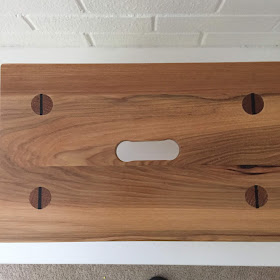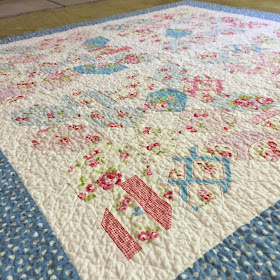Listen here
or use the Flash Player on this site for current and past episodes. Flash
Player is not compatible with Internet Explorer. Try a different browser like
Safari. Or jaunt on over to iTunes
to find the show there.
Knitting Pipeline
is a Craftsy Affiliate. Craftsy offers affordable online classes and supplies. When
you use the link in the sidebar before purchasing I receive a small percentage
of your purchase at no extra cost to you. Thank you!
Show notes are
found at www.knittingpipeline.com. You can find me on Ravelry as PrairiePiper
and on Instagram and YouTube as KnittingPipeline. There are two groups on
Ravelry, Knitting Pipeline and Knitting Pipeline Retreats. Come join us there!
You can also find me here:
Ravelry: PrairiePiper
Feel free to include me in your friends.
Instagram: knittingpipeline
Twitter: knittingline
Pinterest: Paula Emons-Fuessle
Pipeliner Notes
Note about videocast…you may not have received notification
from past two episodes even if you are a subscriber.
Thank you to everyone for supporting the podcast for the past
8 years! I could not do it without you.
Welcome to our newest Pipeliners who have said hello to us
on the Welcome thread or to me in a personal message. AnnSoutter from Buffalo
Grove IL. Remember to introduce yourself in the Welcome thread if you are new
so I can recognize you on the show.
Thank you for your star ratings and reviews on iTunes. New
review from Paulsmom12503!
Events
Links to retreats and registration materials are in the Knitting
Pipeline Retreats Group on Ravelry. There is also a sticky
thread with all upcoming retreat dates.
Eagle Crest Retreat Registration is open. Just a few spots
left. Attendees have been posted on Ravelry.
Trip to Ireland in May 2019. Will be a separate episode AND blog
post so subscribe to both.
Mittens for Maine (and Eagle Crest) Mary of Knitting Dish
podcast.
Needle Notes
 |
| Reiko by Melanie Berg for Quince & Co Shawls 4 |
 |
| Detail of Reiko |
 |
| Points on right side are the bind off. Loved it! |
Reiko by
Melanie Berg for Quince & Co Shawls 4
Seven
Sisters Arts Zenith in Lodestar. Gorgeous yarn!
This shawl is pure joy to knit! The pattern is beautifully
written. I would love to make another one in Quince & Co Piper.
Crazy
Eights Dishcloth by Julia Tarsha (Simply Notable)
Nature Notes
·
Stopped feeding except for Goldfinches and
hummingbirds. Water feature
·
Wrens singing most of the time.
·
Bluebirds
·
Garden looks good!
·
Japanese beetles are back.
·
Swallowtail in garden. Red Spotted Purple on
hike. Doe and fawn.
Just living is not enough. One must have sunshine, freedom,
and a little flower. --H. C. Andersen, The Complete Fairy Tales. (The Butterfly)
In The Pipeline
Knitting
Odette Hoodie
by Carrie Bostick Hoge (knitting as pullover instead of cardigan.)
Galiano Socks
by Tracie Millar
Making
Quilting
Baby Kisses by Jenny Doan. For Helene’s 3rd
birthday. Shown in Video Extra #21
Mouse House doll quilt by Amy Sinibaldi from Sweetly
Stitched Handmades.
Grandmother’s Fan Quilt sent to Grace and Peace Quilting.
Wooden Stool by Papa. It is a small version of the stool he made from the Craftsy Class.
 |
| Papa made for the 3rd birthday |
 |
| Top of stool with joins |
Information from Lisa who is Turbogal.
Hi Paula,
As always, I really enjoyed your episode. I love to hear about the knitting, also also the nature notes (I get to compare to see how different Minnesota is from Illinois!).
As always, I really enjoyed your episode. I love to hear about the knitting, also also the nature notes (I get to compare to see how different Minnesota is from Illinois!).
I listened to your yogurt making segment with interest. I
studied dairy science, and am a yogurt maker by profession (I’ve worked for a well known yogurt company for more than 20 years). You are so right that yogurt is easy to make
at home, and I’m always excited to hear about people making it themselves,
because they really see what an amazing fermentation process it is. I have a
couple of comments which might add to the discussion.
You said you thought the only reason dry milk was in your
sister’s recipe was to save money. I don’t know her recipe, but I always tell
people that to make good yogurt you have to add milk to milk. Adding extra milk
powder (or condensed milk) to liquid milk makes a yogurt with a thicker texture
and better body (less watery tasting). Using a milk with at least some fat will
also give the yogurt better body.
You also talked about the difference between Greek yogurt
and regular yogurt. There is no legal definition of Greek yogurt, and if you
travel the world it means different things in different places. In the US,
Greek yogurt is generally thought of as yogurt that is higher protein because
it the yogurt is strained to remove liquid - that concentrates it (which
increases the protein and the fat if is has fat), and makes it thicker.
You mentioned not moving the yogurt during fermentation,
which is very important. If the curd is stirred or even jostled too much you
won’t get the nice, smooth yogurt texture. During the fermentation, the
proteins form a network, like a net that traps water, but if it is jostled, the
net won’t stay nice and open, and able to trap the water.
You talked about how the temperature is pretty forgiving.
That is true, but, if you want to have consistent results both the temperature
and the culture you use are very important. Yogurt culture is actually two
different bacteria, and they each have a slightly different temperature
preference, so shifts in temperature will favor one over another. One of the
cultures is more tolerant of acid than the other, and so more growth by that
culture that will make the yogurt more sour. There are “cheese cultures” that
grow at room temperature, used to make products like fromage frais, which is
also delicious.
You talked about leaving the yogurt for 8 hrs. That is a
good rule of thumb for the home yogurt maker (the best way is to measure pH
exactly, but most people can’t do that at home!). It is true that the longer
you let it ferment, the more sour it gets. But, how sour it gets (and what
flavors it develops) also very much depends on the culture you use and how it
grows. What you use for culture makes a big impact, so I recommend using fresh
culture each time you start (not like sourdough, where you use the last batch
to culture the next batch).
One other thing that I like to tell people about yogurt: One
way to minimize the liquid whey that appears when you have a partially used
container of yogurt, just use your spoon to smooth out the surface of the
yogurt after you have dipped out what you need. This will really minimize the
separation (called synersis). If you do see separation, there’s no need to pour
it off. Just stir it in!
This ended up being quite long -
I am so passionate about yogurt! It is fun to hear about people making it at
home. Thanks for sharing it on your podcast.
…What you are doing is using fresh starter, because the
culture you add should be the same every time you make a batch, if you always
use the same culture source. The cultures should still be live and active well
beyond the code date on your commercial yogurt, but they will grow more vigorously
the “younger” the yogurt is. Not using fresh starter would be: saving some of
the yogurt you made and using it to culture your next batch. The possible
problem with that is since home yogurt making is not very controlled, the ratio
of the two cultures will probably be different each time.
Thank you, Lisa!





No comments:
Post a Comment